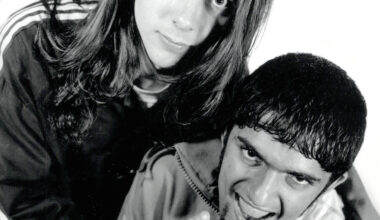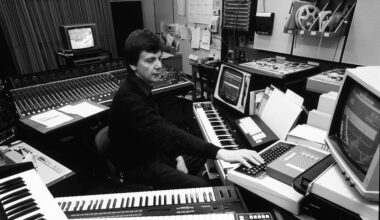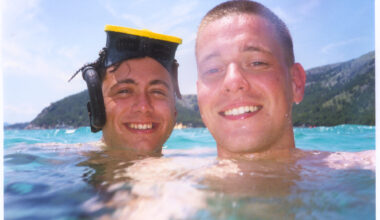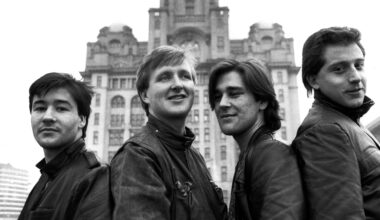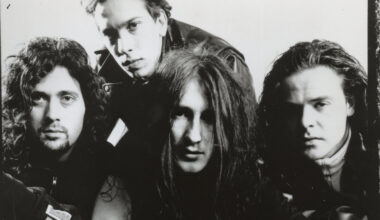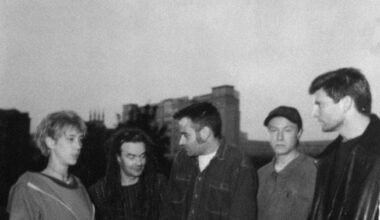Richard Norris tells the story behind The Grid’s 1990 stone-cold ambient house classic ‘Floatation’
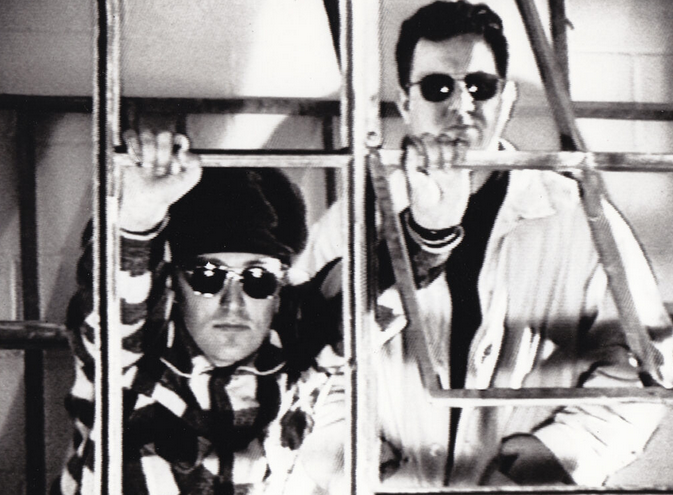
“I was in bands when I was a kid. Like everyone from that era, I liked listening to John Peel and I liked the DIY idea, that you could just get up and get on with it. When I was about 14, I was in a band called The Innocent Vicars and we did a Buzzcocks/Undertones type single that got played by Peel.
“After college, I started working at a record label called Bam-Caruso. It was run by Phil Smee, a graphic designer who had this insane passion for psychedelic records, and a guy called Cally [Martin Callomon], who went on to manage Julian Cope, among many other things. As a fresh-faced teenager, it was quite an education because they both had an enormous music knowledge.
“Bam-Caruso published a magazine called ‘Strange Things Are Happening’ and I was sent to interview Genesis P-Orridge from Psychic TV, who was really into what we were doing. It was the first time I’d ever met them and they were saying, ‘Have you heard of acid house?’. I hadn’t, but I thought the idea of putting psychedelia and dance music together was fantastic. ‘Right,’ they said. ‘Let’s go and make a record next weekend.’ So that’s what we did.
“I met Genesis at this tiny studio in Chiswick. There were about 12 of us there and between us we made an album, ‘Jack The Tab – Acid Tablets Volume One’. The tracks were credited to different artists, like a compilation album, but it was all done by this group of people. Gen had brought Dave Ball along and that was the first time we worked together. I remember Gen had various rules, like we weren’t allowed to spend more than an hour on a track, including writing and mixing. For quite a while after that, I thought all tracks should only take an hour to make.
“Although the album was recorded in September 1987, it didn’t get released until the following April, by which time we actually knew what acid house was, which we didn’t when we were in the studio. People are often confused because there’s no Roland 303 on ‘Jack The Tab’, but that’s because it was just our idea of what psychedelic dance music could sound like.
“When the album came out, it got a bit of press and did quite well. Cally from Bam-Caruso had started working as an A&R man at Warners by then, so I gave him a copy. He loved it and said he could get us a deal. He wanted me and Gen to make more strange records like ‘Jack The Tab’, only more dance-oriented. Unfortunately, Gen got cold feet and bailed out. I thought, ‘That’s it, I’m not going to get my record deal!’, but Cally and I then came up with the idea of me working with different producers to make an album of dance music from around the world. But then Mark Kamins did his ‘United House Nations’ album, so that was the end of that idea.
“The first person I’d thought about working with on this new project was Dave Ball. The track we’d recorded for ‘Jack The Tab’ seemed to work really well, so we just carried on and started making what turned out to be The Grid’s first album. It was late 1988 and I’d been going to acid clubs like Shoom and was writing about it all for the NME, so the record was much more informed by dance music.
“I used to go to the NME offices to take them the Bam-Caruso records, but while I was there I kept saying, ‘You’ve got to write about acid house’. It took nine months for them to agree. I remember Steven Wells saying, ‘Nah, we’re not writing about that, it’s rubbish, it just sounds like bad Gary Numan’. I’d tell him, ‘You’re going to miss this generation’s punk rock’. I badgered them so much that in the end they just gave in and said, ‘Alright, you do it then’.
“I’d kind of heard about Ibiza, but it wasn’t that well known outside of the scene, so I said to the NME editor, ‘You’ve got to send me and my girlfriend to Ibiza for two weeks to find out about this new music’. I could have said anywhere, Torremolinos or Benidorm, but amazingly he said, ‘Brilliant, let’s do it’. That was the summer of 1989, so going there had an impact on The Grid’s ‘Floatation’. The basic idea of the track was to make a slower record you could play on the beach in the open air.
“When Dave and I had finished the album, Cally said, ‘Can you just do one more track?’. Begrudgingly, we ended up back in the studio a couple of weeks later to record the track that would become ‘Floatation’ and Dave was saying, ‘Let’s try and do something that sounds like the end title credits of a film’.
He’s obsessed with John Barry and was always playing these two Barry-esque chords, but they didn’t resolve, they needed another chord, so between us we got the chords together. So although Ibiza was in the air, it was actually more about John Barry.
“We asked Andrew Weatherall to remix the track and it was one of his earliest remixes, either the second or third mix he did. I’d met Weatherall through clubbing. In fact, when me and Genesis P-Orridge went to Shoom for the first time, the very first person we saw there was Weatherall, who proudly showed us his Psychic TV tattoo. Gen was very pleased about that.
“The final version of ‘Floatation’ was an 11-minute instrumental, which people seemed to like, so we thought we’d put some words to it and make it a single. We got our friend Sasha, who we’d met at Shoom, to do some breathy, sub Gainsbourg vocals. I’ve still got the DAT of us doing it. You can hear me and Sasha in the booth and Weatherall in the control room, and we’re basically making it up as we go along. It probably took about five minutes.
“There are a few samples on the record, various bits and pieces and a little film dialogue, which you absolutely wouldn’t get away with nowadays. Most of it, like the clarinet and all the keyboards and the drums, were ours, but Weatherall did put a bit of Stone Roses on it at the end. The original mix was done at Battery Studios in west London and the Roses were in the studio next door, so he borrowed a copy of their album for a loop. From what I heard, Ian Brown gave it his blessing.
“There was a big buzz when the single came out. I remember going to shops in Soho and there’d be signs in the window saying, “No copies of ‘Floatation’ left”. It didn’t chart massively, and I think the fact it didn’t crack the Top 40 was one of the reasons our days were numbered at Warners. They were used to people like Simply Red getting high chart positions, so this strange, left-field band born out of ‘Jack The Tab’ wasn’t quite doing it for them. In the end, ‘Floatation’ was more influential than it was successful, but I’m happy with that.”
A limited edition of ‘Floatation (Special Request Remix)’ on 12-inch clear vinyl is available now from softcell.co.uk
